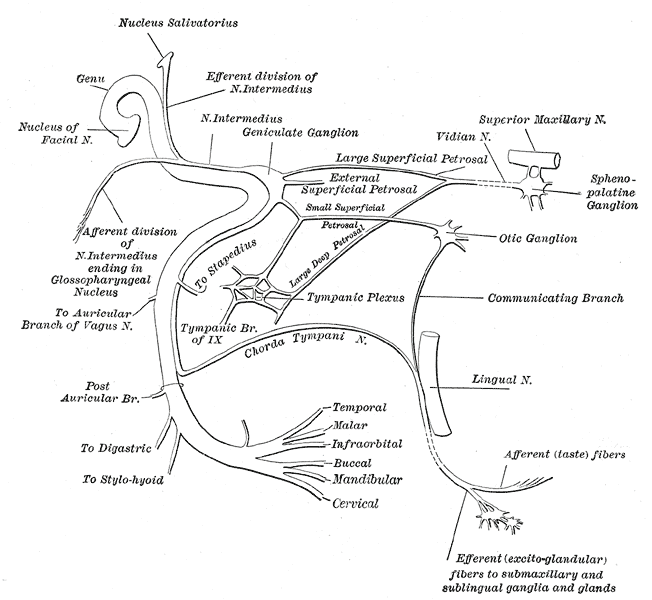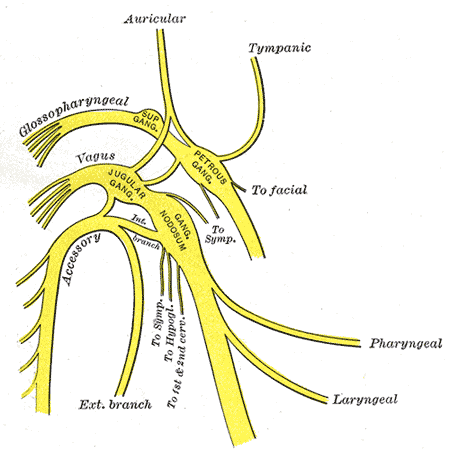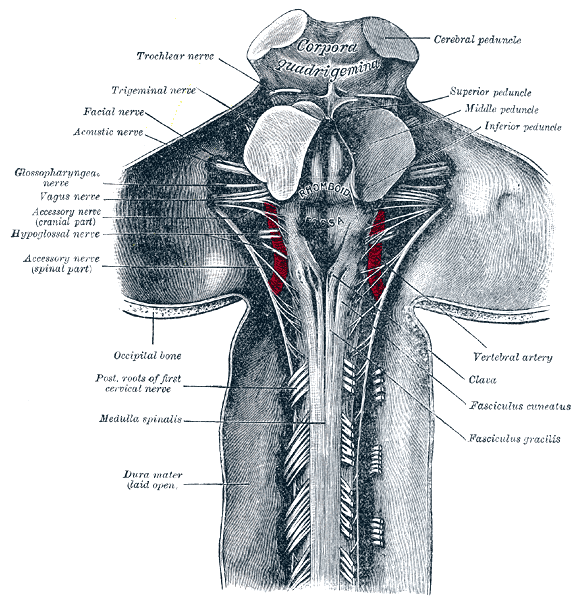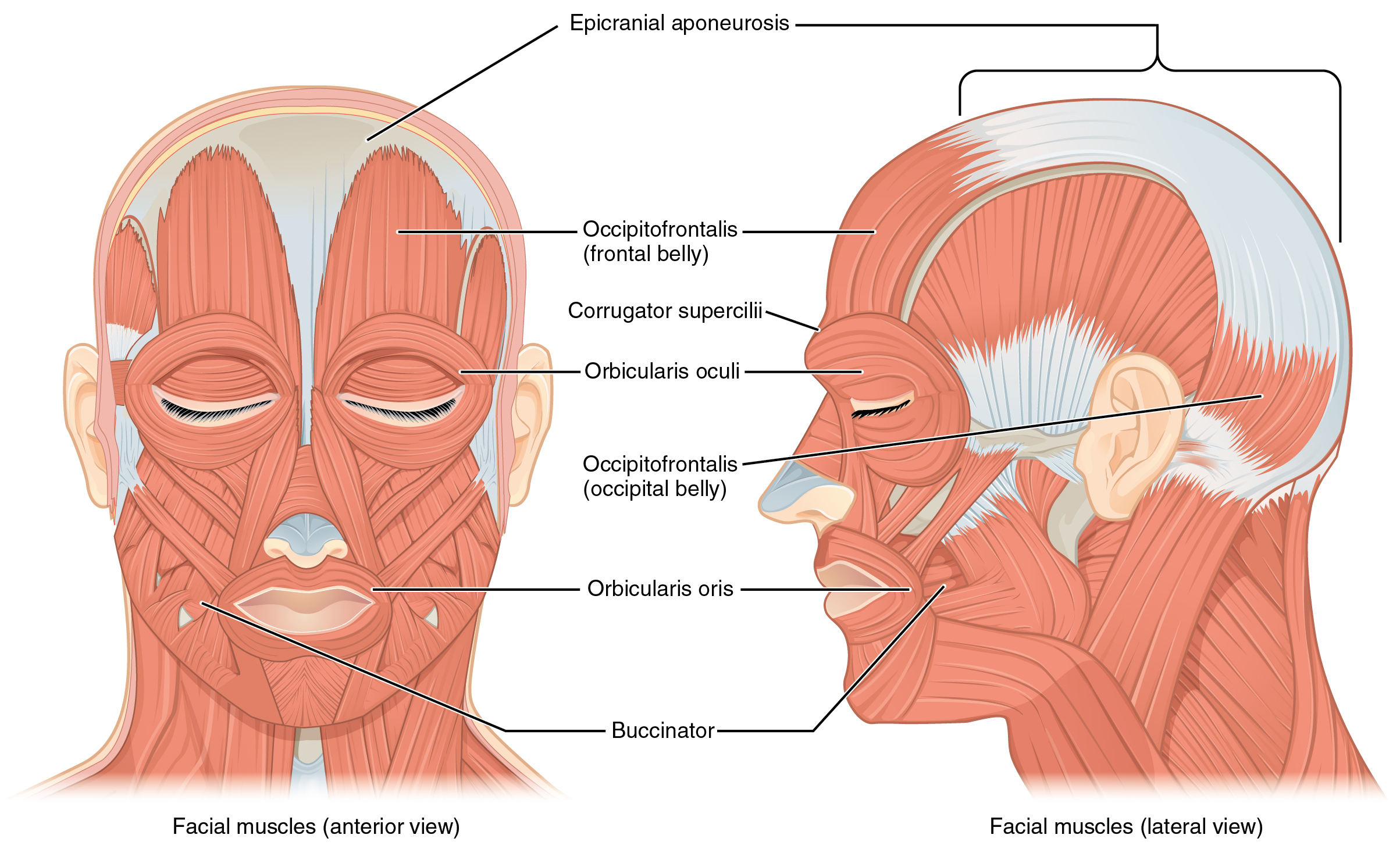CNVII Facial Nerve
Somatic motor Pathway:
Motor: Pre-central gyrus -> Corticobulbar tract (1°) -> (Pontomedullary junction) Facial motor nucleus -> Facial nerve (2°) -> Muscles of facial expression
Parasympathetic Motor Pathway:
Lacrimal / nasal mucosa: Hypothalamus -> Dorsal longitudinal Fasciculus -> Superior Salivatory Nucleus (2° Synapse) -> Pterygopalatine ganglion (3° Synapse) -> Lacrimal gland + Nasal Mucosa Gland
Submandibular/Sublingual: Hypothalamus -> Dorsal Longitudinal Fasciculus -> Superior Salivatory nucleus (2° Synapse) -> Lingual Nerve -> Submandibular ganglion (3° Synapse) -> Submandibular / Sublingual gland
Special sense (2/3 Taste) Pathway:
Sensory cortex (Gustatory area) -> Ventral Posterior Medial Nucleus of Thalamus (VPM) (2° Synapse) -> Nucleus Solitarius (3° Synapse) -> Tractus solitarius -> -> Geniculate Ganglion -> Chorda Tympani -> RUN W/ Lingual nerve (V3) -> Taste Anterior 2/3 tongue
Dysfunction
- Hyperacusis (sensitivity to sound due to innervation of inner ear bones: stapedius)
- Decreased lacrimation
- Absence of taste on anterior 2/3 of tongue
- Facial muscle palsy
- Bell’s palsy is an example of CN VII paralysis
DDX
Facial CN VII lesions vs UMN lesions:
- Facial = weakness on half of the face
- UMN: weakness on one half (but only the lower 2/3 = forehead not affected)
Palsy
- Bell’s Palsy
Causes
Lyme disease4
References
1.
Gray H. Anatomy of the Human Body. 20th ed. (Lewis WH, ed.). Lea & Febiger; 1918. https://www.bartleby.com/107/
2.
Boundless. Boundless Anatomy and Physiology. Open Education Resource (OER) LibreTexts Project https://university.pressbooks.pub/test456/chapter/overview-of-anatomy-and-physiology/
3.
Betts JG, Blaker W. Openstax Anatomy and Physiology. 2nd ed. OpenStax; 2022. https://openstax.org/details/books/anatomy-and-physiology-2e/?Book%20details
4.
Roos KL. Neurologic Complications of Lyme Disease. CONTINUUM: Lifelong Learning in Neurology. 2021;27(4):1040-1050. doi:10.1212/CON.0000000000001015
Citation
For attribution, please cite this work as:
Yomogida N, Kerstein C. CNVII Facial Nerve. https://yomokerst.com/The
Archive/Neuroscience/Neuroanatomy/Cranial
Nerves/CN7_Facial.html





